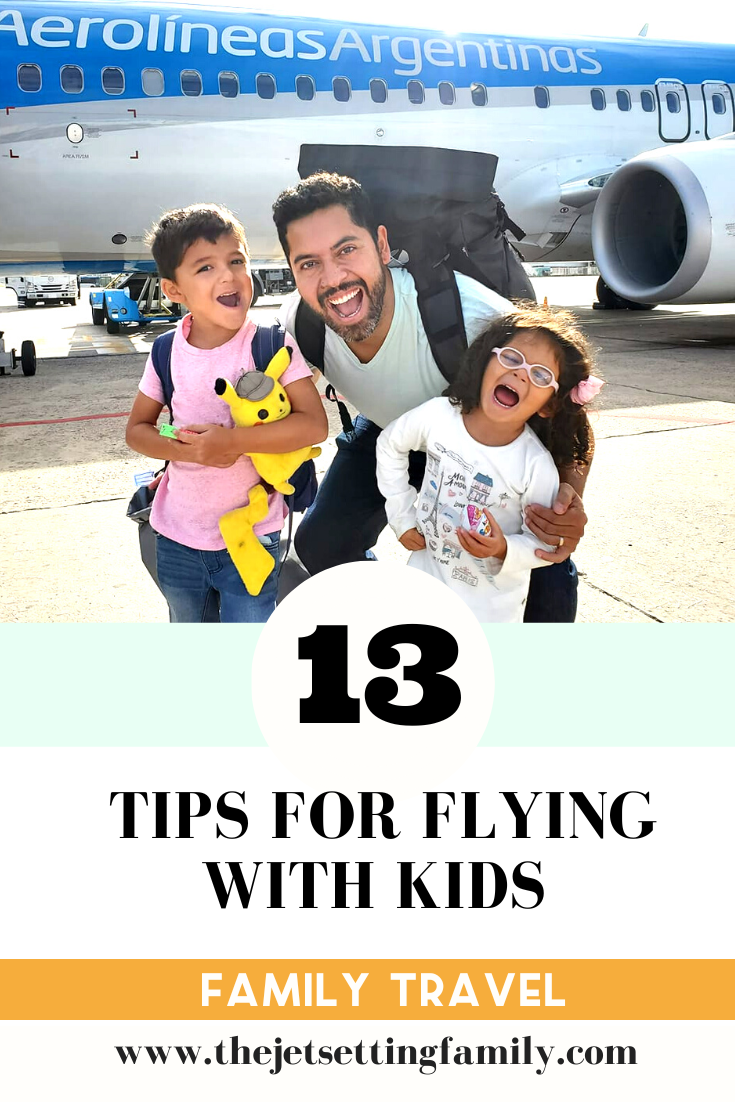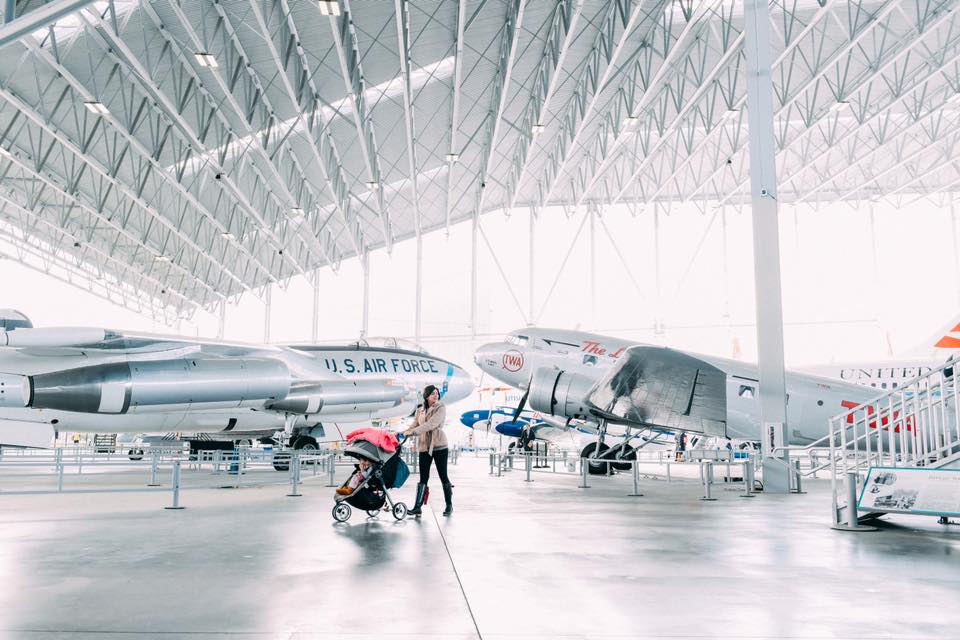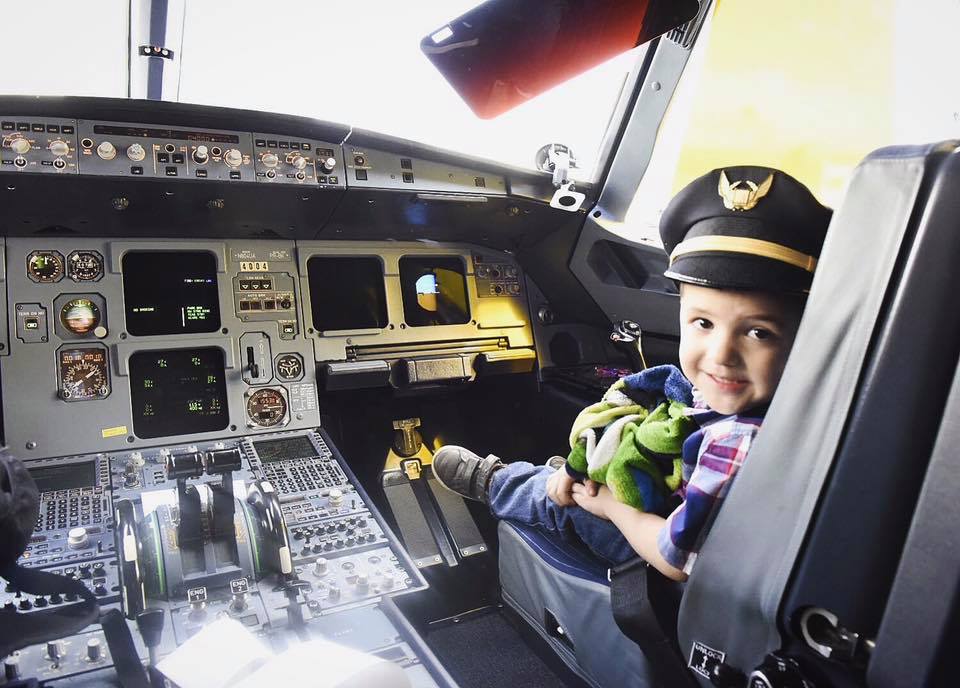Flying with kids can be a daunting prospect for many parents, with concerns about keeping little ones entertained, managing their sleep schedules, and dealing with the logistics of getting everyone and everything through airport security. However, with some preparation and a few helpful tips, you can make the journey more manageable for everyone involved. Whether you’re traveling with a baby or a toddler, there are plenty of strategies you can use to ensure that your flight is as stress-free as possible. In this article, we’ll explore some top tips for flying with kids, from packing smart to prepping your children for the journey. So buckle up, take a deep breath, and get ready to make your next flight with the family a breeze!
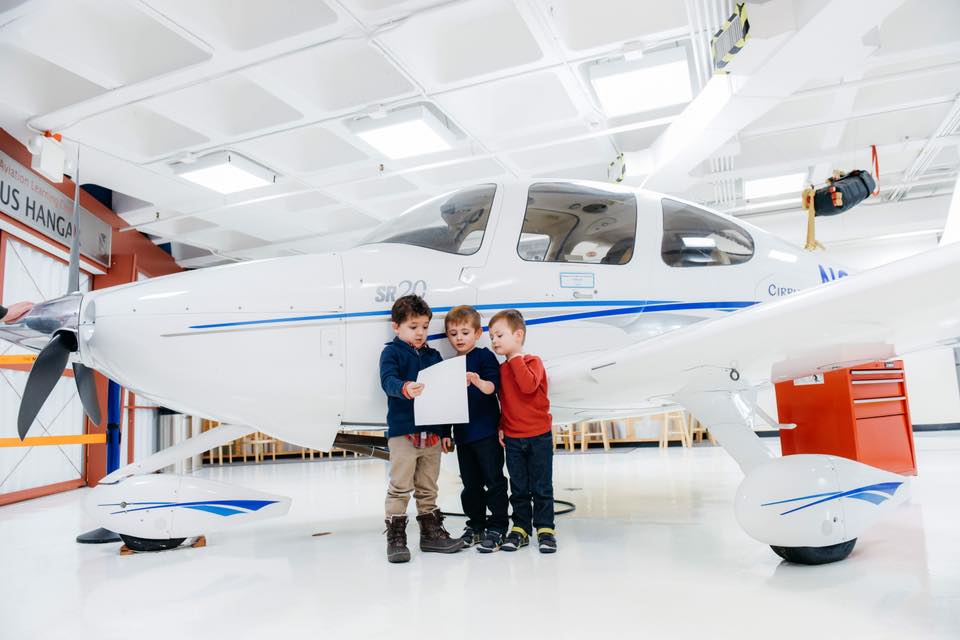
1. Prep Your Children
Prepping children via a story or conversation about flying can be helpful in easing their anxiety and making the experience more enjoyable for everyone involved. If your children are unfamiliar with the process of flying, explaining to them that planes can be loud, have bumps, and require long periods of sitting, can help prepare them for the realities of air travel. It’s also important to highlight the exciting aspects of flying, such as the ability to travel to new and exciting destinations. You can make the story informative but fun for your children, using age-appropriate language and imagery to help them understand the process. Additionally, talk about the different parts of the plane, such as the cockpit and the wings, and how they help the plane fly. By prepping your children for the journey, you can help make the experience more enjoyable and exciting for everyone involved.
Extra Tip: Your kids may have to put their favorite stuffed animal on the X-ray machine for security. For some kids parting with their lovey during a stressful time is hard. We always told our kids it was their check up and that the x-ray machine was making sure their stuffed animal was healthy for the trip. We always made sure they knew it was coming and would only take a minute.
2. Save Time With Travel Programs
Kids only have so much patience, so waiting in long lines before or after flights can add to their frustration. Thankfully there are programs such as TSA PreCheck, Global Entry, and Mobile Passport that can alleviate much of the waiting time and create smoother day. For the programs that have fees be sure to check with your credit card as many offer reimbursements.
If you plan to travel often I highly recommend getting TSA PreCheck for your family. TSA Precheck is only $78 for 5 years (as of March 2023) and can be incredibly beneficial to families traveling with kids because it saves time and hassle at security checkpoints. With TSA Precheck, families can skip the long security lines and avoid the need to remove shoes, belts, and jackets. Additionally, liquids and laptops can stay in carry-on bags, making it easier for parents to manage their children and their belongings. This can be especially helpful for families with young children who may be more prone to getting antsy or upset while waiting in long lines.
If you plan to travel internationally I would choose to apply to Global Entry, as that is $100 and includes TSA PreCheck as well. Global Entry allows you to have much shorter lines at BOTH US immigration and TSA security checkpoints.
If you don’t want to spend money on either plan, you should definitely still download the Mobile Passport App when traveling internationally! Mobile Passport is a free program that is easy to use and allows you to skip immigration lines when entering the US.
For more information on Mobile Passport and Global Entry CLICK HERE
3. Plan Ahead
Planning ahead for a day of flying can help make the entire travel experience smoother and more enjoyable for families. One of the best ways to prepare for a day of flying is through research. Families can research the airport they will be departing from and arriving at. Does it have lounges you qualify for? (Once again check your credit card for perks: some include Priority Pass). Does it have a kids play area or or restaurant your family will like? Families can also research the airline they will be flying with, including their policies on baggage allowances, seating options, and any additional fees for services like checked baggage or seat selection. Additionally, families can research any potential travel restrictions or requirements such as visa or vaccination requirements for international travel or COVID-19 protocols. By doing this research ahead of time, families can plan their travel day with greater ease and efficiency, reducing stress and allowing them to enjoy their travel experience.
Extra Tip: If traveling with a baby on a long flight, be sure to see if they have a baby bassinet option available. This is a great option that allows them to lay comfortably and usually comes at no cost.
4. Seat Booking Hack
Airplanes don’t give you much space to get comfortable, but we have discovered a small hack that sometimes allows us to have a little more space for our family,
When we book our seats on the flights we book a row leaving the middle seats open like this:
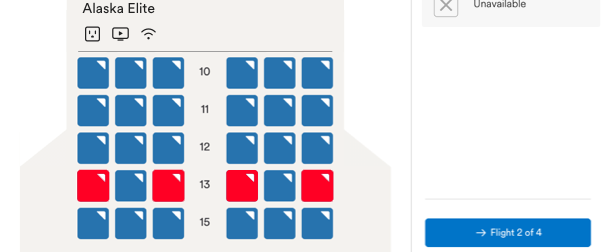
We do this because often times the middle seats are last to book, especially at the back of the plane, so it gives us a better chance at having 2 rows just for our family. If someone does show up with the middle seat booked, they are often delighted to switch to your aisle or window instead.
Try the hack and let us know if you get lucky!
Note: Recently American Airlines, United, and Frontier changed their policies to allow families to sit together without an additional cost. This is a great step, but may make the travel hack more difficult for families with kids as the no charge for children typically applies to seats directly adjacent to one another.
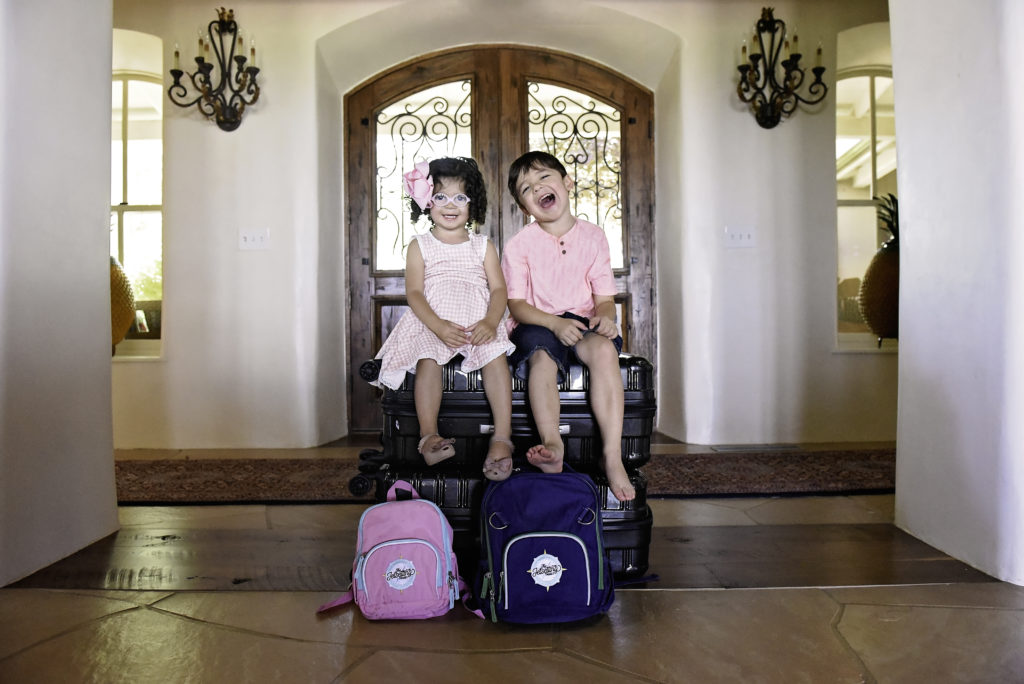
5. Pack Smart
Bring sure to pack items that can help keep your children comfortable, entertained, and fed during the flight. A few essential items to pack in a carry-on bag include diapers, wipes, snacks, and formula or baby food if necessary. Always pack a change of clothes for your kids, even if potty trained, as a drink spilled or illness could still happen. You can also pack a small blanket, a neck pillow, or a favorite stuffed animal to help your child sleep or feel more comfortable during the flight. Other items to consider bringing along include a tablet or handheld gaming device, books, or coloring books to keep kids entertained. It’s also a good idea to pack headphones or earplugs to help block out any noise on the plane. We always have our kids pack their backpacks, but add a small surprise into their bag that they open on the flight. Lastly, you should be sure to bring any necessary medications, including motion sickness medication or allergy medicine, as well as a first aid kit with essentials like band-aids, hand sanitizer, and pain relievers. By packing smart for the airplane, you can ensure a more comfortable and enjoyable flight for both you and your kids.
6. Choose The Right Time to Fly
When planning a family trip that involves flying, you should take into consideration your child’s sleep schedule when booking flights. Depending on the age of the child, it may be best to book a flight that coincides with their typical nap or bedtime schedule to avoid disrupting their routine. We are not the earliest risers (except for our son Santi), so afternoon flights allow us to finish packing up and head to the airport with time to spare. For flights that are 5 hours and less, afternoon flights also allow us to get to our new location in the evening, get dinner and a good night’s rest so we can hit the ground running the next day, ready to explore. For long flights, red eye flights tend to work best, since your kids will almost certainly sleep for some (or most of the flight)!
7. Consider Melatonin
When traveling across time zones, a child’s sleep-wake cycle can become disrupted, leading to difficulty falling asleep or staying asleep at the appropriate times. This is commonly referred to as jet lag. Melatonin supplements can help regulate a child’s sleep-wake cycle, making it easier for them to adjust to a new time zone and fall asleep at the appropriate time. Melatonin can also help reduce the time it takes to fall asleep and improve sleep quality, making for a more restful and enjoyable travel experience. It’s important to note that you should always consult with your child’s healthcare provider before giving your child melatonin supplements, as dosage and timing can vary based on age and weight. Additionally, melatonin should only be used as a temporary solution for adjusting to new time zones and should not be relied upon as a long-term solution for sleep issues.
We realize this solution isn’t for everyone, but we have found it helpful in the past for red eye flights or extreme time zone changes.
8. Dress Comfortably
When traveling with kids, dressing them in comfortable layers is the best way to ensure their comfort during a day of flying. Airplanes can be unpredictable when it comes to temperature, so it’s important to be prepared for both warm and cool conditions. We love packing our kids furry comfy sweaters that also can be bunched up and used as pillows if they don’t feel the need to wear them. Additionally, consider choosing comfortable, breathable fabrics that allow for movement and don’t restrict circulation. It’s also a good idea to avoid dressing children in clothing with excessive buttons or zippers, which can be uncomfortable during extended periods of sitting or sleeping.
9. Download The Airline’s App
When preparing for a flight, it’s essential to remember to download the airline’s app before taking off. In some cases, the in-flight entertainment and other content are only accessible through the airline app, and passengers may not be able to download it over inflight WiFi once the plane takes off. This can be especially frustrating for parents traveling with kids who are relying on the in-flight entertainment to keep them occupied during the flight. By downloading the airline app ahead of time, you can ensure that they have access to all the available in-flight entertainment options, as well as any other features or services that may be exclusive to the app. Airline apps offer a convenient way to access flight information, including real-time updates on flight status, gate changes, and baggage claim information. It’s also a good idea to make sure the app is updated to the latest version before the flight to avoid any compatibility issues or glitches.
10. Strollers and Car Seats
If you are traveling with a baby you typically have a lot more to carry. We always loved taking a stroller to the actual gate so that the kids could have a place to nap or be comfy during layover. It is important that you don’t forget to get gate tags for your stroller prior to boarding so that you are not scrambling to get one while boarding. Unless your stroller fits in the overhead compartment you will typically leave your stroller at the end of the jetway you board at. If you prefer not to take your stroller through security you can check it in with your luggage for free.
Extra Tip: Children under 2 fly for free as a lap child, so they do not get an actual seat unless you purchase it. If you want to use your car seat though you can always ask at check in if there is an empty seat for your baby to utilize their car seat. It is NOT guaranteed, but some agents will accommodate the request as it is safer for a child to fly in a car seat. If not you can check your car seat in with your luggage for free.
11. Feed During Takeoff and Landing
Feeding or giving a pacifier to a baby during takeoff and landing of a plane can help alleviate the discomfort caused by changes in air pressure. Babies are especially susceptible to the discomfort caused by these changes because their Eustachian tubes, which connect the middle ear to the back of the throat, are still developing and may not function as efficiently as they do in adults. This can cause pain and pressure in the ears, which can be distressing for babies and can lead to crying and fussiness. Feeding a baby, whether through breastfeeding or bottle-feeding, or giving them a pacifier to suck on can help equalize the pressure in the middle ear and alleviate discomfort. Additionally, the act of sucking can be calming for babies and can help them relax during takeoff and landing, which can be a stressful experience for some babies.
12. Try to Visit the Pilots
If you board the plane early with your children, it’s worth asking if you can take them to see the cockpit and meet the pilots. Many airlines are happy to offer this opportunity to families, especially those with young children who may be interested in the inner workings of the plane. Not only is it a fun and exciting experience for kids, but it can also be educational, helping them to learn about the different instruments and controls that are used to fly the plane. It can also help to alleviate any fears or anxieties that children may have about flying, by showing them that there are skilled and experienced pilots at the helm. However, it’s important to note that not all airlines may offer this opportunity, and it’s always best to ask politely and respect the crew’s decision if they are unable to accommodate your request.
13. Stay Calm!
When traveling with kids, it’s important to remain calm and patient throughout the journey. It’s important that you try to keep a positive attitude. If your child does become anxious or upset during the journey, it’s important for parents to be patient and understanding, and to try to identify the root of the problem so that it can be addressed. Additionally, you should plan for delays or unexpected situations that may arise during the journey, and try to have backup plans in place to keep your child comfortable and entertained. Overall, remaining calm and patient when traveling with kids can help make the journey more enjoyable for everyone, and can help ensure that the trip is a positive experience for the whole family.
In conclusion, flying with kids doesn’t have to be a stressful experience if you take the time to prepare ahead of time. By packing smart, prepping your children for the journey, and taking advantage of resources like TSA Precheck and airline apps, you can make the journey smoother and more enjoyable for everyone involved. It’s important to remain patient and calm throughout the journey, even when unexpected challenges arise. With a positive attitude and a willingness to adapt to changing circumstances, you can help ensure that your family has a stress-free and enjoyable flight experience. So the next time you’re planning a trip with the kids, keep these tips in mind and get ready to take off with confidence!
